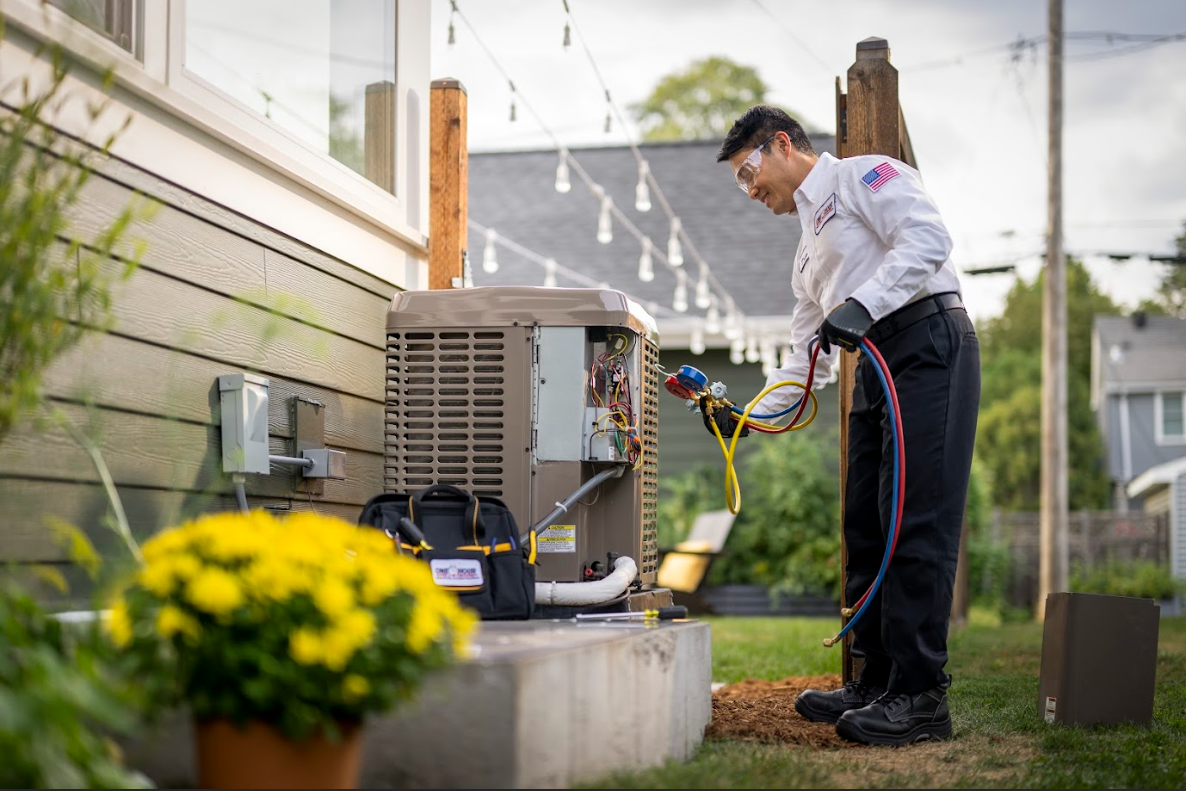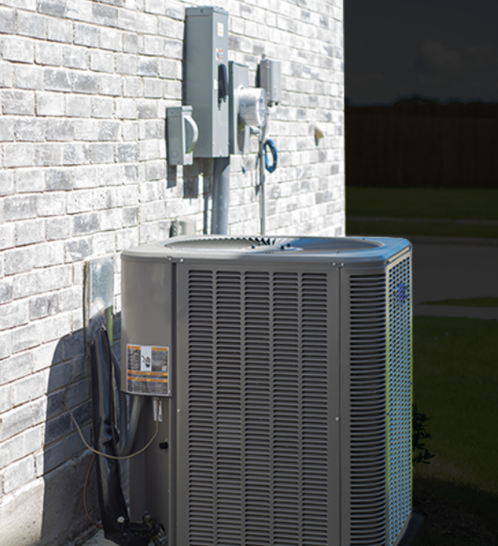
Common HVAC mistakes homeowners make
Homeowners across Ogden, South Ogden, Washington Terrace, and the benches near Ogden Canyon share one goal: a home that stays comfortable without surprise bills. HVAC systems can deliver that, but small missteps chip away at performance and shorten equipment life. Based on years of service calls in Weber County, here are the most common HVAC mistakes seen in Ogden homes, how they show up on utility statements, and what to do instead.
Ignoring air filters until there is a breakdown
A clogged filter forces the blower to work harder and starves the system of airflow. That means hotter heat exchangers in winter, colder coils in summer, and higher energy use year-round. In Ogden’s dusty months and during wildfire smoke events, filters load up faster than many expect.
Most homes do well with a basic https://www.onehourheatandair.com/ogden pleated filter swapped every 60 to 90 days. Homes with pets, ongoing remodeling, or asthma often need a 30-day schedule. High-MERV filters catch more particles, but they also restrict airflow if the system was not sized for them. A quick rule from field experience: if static pressure climbs or rooms feel stuffy after a filter upgrade, go back one MERV rating or ask for a pressure reading during a tune-up.
Blocking supply or return vents with furniture
It happens during a living room refresh or holiday décor move. A couch drops in front of a return, or a rug covers a floor register. The system loses balance, rooms go uneven, and ducts start to whistle. In older Ogden bungalows with single returns, blocking that one grill can cripple airflow across the whole home.
Keep at least six inches clear around supply registers and a full foot in front of return grilles. If the best layout still crowds a vent, a technician can sometimes relocate a register or add a return to improve circulation.
Skipping maintenance before the season hits
In Ogden, the first week above 90 or the first freeze sends call volume through the roof. That same week exposes weak capacitors, dirty flame sensors, and low refrigerant that went unnoticed. A 30 to 60-minute tune-up in shoulder months prevents most no-cools and no-heats on the hottest or coldest days.
A practical seasonal plan for Weber County homes:
- Spring: clean condenser coils, test capacitors and contactor, check refrigerant charge, flush condensate line.
- Fall: inspect heat exchanger, clean burners, test inducer and ignition system, verify combustion and CO levels.
A quality maintenance visit should include static pressure readings, temperature splits, and written results. If a provider skips numbers, ask why.
Closing too many vents to “push air” somewhere else
It seems logical to shut vents in unused rooms. In practice, duct systems do not behave like garden hoses. Closing vents increases static pressure, raises duct leakage, and can put the blower out of its efficient range. In homes with older ductwork, it can also cause cold spots that lead to condensation and mold in wall cavities.
If a home office in East Bench runs warm in summer, the better fix is usually a damper adjustment at the trunk, modest duct sealing, or a small return added in that room. Sometimes a zoning retrofit pays back, especially in two-story homes near Bonneville Park where heat stacks upstairs.
Thermostat habits that waste energy
Large swings feel like they should save more, but extreme set-back and set-up schedules can make a system run longer at high output. For heat pumps common in newer Ogden builds, big setbacks also trigger expensive backup heat.
Set moderate schedules: a 2 to 3 degree change is often enough. Enable “circulate” fan mode for short intervals each hour to even out temperatures across closed-door bedrooms. If the thermostat sits in direct sun near a south-facing window, relocate it to an interior wall to prevent false readings.
DIY refrigerant top-offs without a leak fix
Adding refrigerant to a system that lost charge treats the symptom, not the cause. Small leaks in flare fittings or evaporator coils are common, especially after 8 to 12 years. Repeated top-offs drive up costs and stress the compressor. In Ogden’s dry climate, a marginally low charge also lets coils freeze overnight, then thaw and flood the drain pan.
A proper repair includes a leak search with electronic detection and nitrogen pressure testing, then evacuation to 500 microns or below before weighing in charge. If a coil is leaking and the system uses R-22, replacing the equipment often makes more financial sense than chasing leaks.

Oversized equipment installed for “extra power”
Bigger is not better. An oversized furnace or AC short cycles, creates drafts, and fails to pull humidity down on muggy summer afternoons after a monsoon storm. In older Ogden homes with additions, oversizing often happened after square footage increased without a full load calculation.
A Manual J load calculation should guide size, not a rough rule per ton. Expect 1 ton of cooling for roughly 500 to 700 square feet in many Weber County homes, but insulation, window orientation, and duct design can change that. If a unit hits setpoint fast but rooms feel clammy or noisy, sizing deserves a second look.
Forgetting the ductwork
Many systems get a shiny new outdoor unit while the ducts stay leaky and undersized. Leaky return ducts in basements or crawlspaces pull in dusty, hot, or cold air that the system must condition from scratch. Undersized branches starve distant rooms in North Ogden ramblers and 1950s cottages alike.
A quick test during a service visit can reveal total external static pressure. If it is above the blower’s rated limit, rework matters more than a higher-SEER upgrade. Common fixes include sealing with mastic, adding returns, increasing trunk size, or replacing kinked flex runs.
Neglecting condensate management
Summer in Ogden is dry, yet AC systems still remove gallons of moisture each day. Algae grows in pans and lines, especially when the air handler sits in an attic near the east bench. A clogged drain can trip a float switch or, worse, leak through drywall.
Adding a cleanout tee, flushing the line with water or a mild vinegar solution during spring service, and installing a secondary drain pan with a wet switch under attic units can prevent damage. If a drain backs up more than once a season, ask about rerouting with better slope.
Using the wrong filter size or poor fit at the return
Gaps around a filter allow unfiltered air to bypass into the blower and coil. Dust cakes on the evaporator and reduces capacity. This is common in homes with makeshift filter racks or bent filter doors.
Filters should fit snugly with no visible bypass paths. If the return design is odd, a custom filter rack or media cabinet solves the problem and steadies airflow.

Expecting a heat pump to feel like a gas furnace
Heat pumps deliver lower supply-air temperatures for longer cycles. That is normal and efficient. Homeowners new to heat pumps sometimes raise the thermostat repeatedly because the air does not feel “hot,” which triggers electric strip heat and spikes bills.
Set realistic expectations. On a 30-degree morning in Ogden, a modern cold-climate heat pump may supply air around 90 to 100 degrees for extended runs. Comfort feels steady, not blast-and-coast.
Letting outdoor units suffocate
Cottonwood fluff, grass clippings, and snowdrifts block airflow across the condenser. Even a light mat of debris can raise head pressure and cut cooling output. Keep 18 to 24 inches clear on all sides and trim shrubs regularly. After a heavy Wasatch Front storm, clear snow away from the bottom grille so the fan can pull air.
Overlooking attic insulation and air sealing
HVAC carries the blame for uneven rooms when the real culprit sits above the ceiling. Attics in many Ogden homes test at R-19 to R-30, yet current recommendations often land near R-49 or higher. Gaps around can lights, bath fans, and attic hatches leak conditioned air.
Before upgrading equipment for comfort issues, check insulation depth and air sealing. Modest improvements often let a right-sized system keep up with less runtime.
Delaying replacement past the point of value
A well-maintained furnace often lasts 15 to 20 years; air conditioners and heat pumps average 12 to 15. Past that, repair frequency climbs and efficiency falls. If coils leak every season or the heat exchanger shows cracks, replacement protects both budget and safety. Rebates through utility programs in Utah can soften the cost, especially for high-efficiency heat pumps.
Simple habits that pay off
- Set calendar reminders to check filters monthly.
- Keep vents clear and verify airflow in each room by feel.
- Schedule AC service in March or April and furnace service in September.
- Walk around the outdoor unit after mowing or storms.
- Save a photo of the system nameplate and filter size on the phone.
Why local context matters in HVAC Ogden
Ogden’s climate swings fast: dry heat in July, inversion cold in January, dust and pollen in the shoulder seasons. Altitude sits near 4,300 feet, which affects combustion and capacity. Historic homes along 25th Street fight duct constraints; newer builds in West Haven lean on heat pumps and tight envelopes. A technician who works daily in HVAC Ogden knows which filters load quickly during wildfire smoke, how north-facing basements hold moisture, and why oversized AC units struggle after afternoon thunderstorms.
That local knowledge turns into practical recommendations: a moderate MERV filter that maintains airflow during dusty months, a slightly larger return for split-levels common in South Ogden, or a smart thermostat setup that avoids electric strip heat on cold mornings.
Ready for fewer surprises and lower bills
Preventing these mistakes costs less than fixing them after a failure. A short visit can confirm airflow, test safety controls, and spot leaks before peak season. For homeowners in Ogden, Washington Terrace, Riverdale, or North Ogden, One Hour Heating & Air Conditioning can inspect the system, give clear numbers, and explain options in plain language.
Call to schedule seasonal maintenance, a comfort assessment, or a second opinion on a repair quote. If a room runs hot, a drain line keeps clogging, or the filter choice feels confusing, ask for help. The team works daily in HVAC Ogden and knows how to keep homes comfortable through inversion winters and valley heat.
One Hour Heating & Air Conditioning provides trusted furnace repair in Ogden, UT and full-service HVAC solutions for homes and businesses. Family-owned and operated by Matt and Sarah McFarland, our company is built on honesty, hard work, and quality service—values passed down from Matt’s experience on McFarland Family Farms, known across Utah for its sweet corn. As part of a national network founded in 2002, we bring reliable heating and cooling care backed by professional training and local dedication.
Our licensed technicians handle furnace and AC installation, repair, and maintenance, heat pumps, ductless mini-splits, thermostat upgrades, air purification, indoor air quality testing, humidifiers, dehumidifiers, duct cleaning, zoning systems, and energy-efficient replacements. We stand by a 100% satisfaction guarantee through the UWIN® program and provide honest recommendations to help Ogden homeowners stay comfortable year-round.
Call today for dependable service that combines national standards with a personal, local touch.
One Hour Heating & Air Conditioning
1501 W 2650 S #103 Phone: (801) 405-9435 Website: https://www.onehourheatandair.com/ogden
Ogden,
UT
84401,
USA